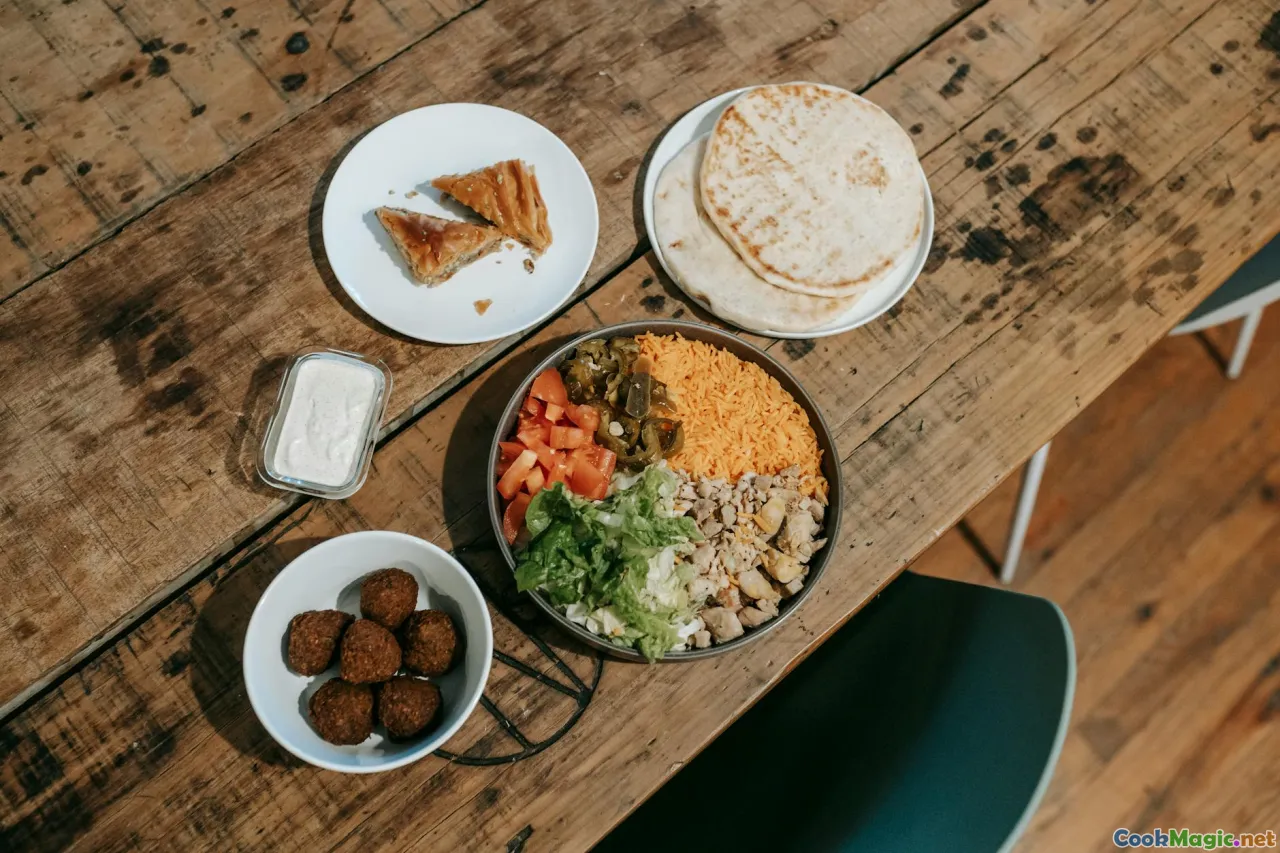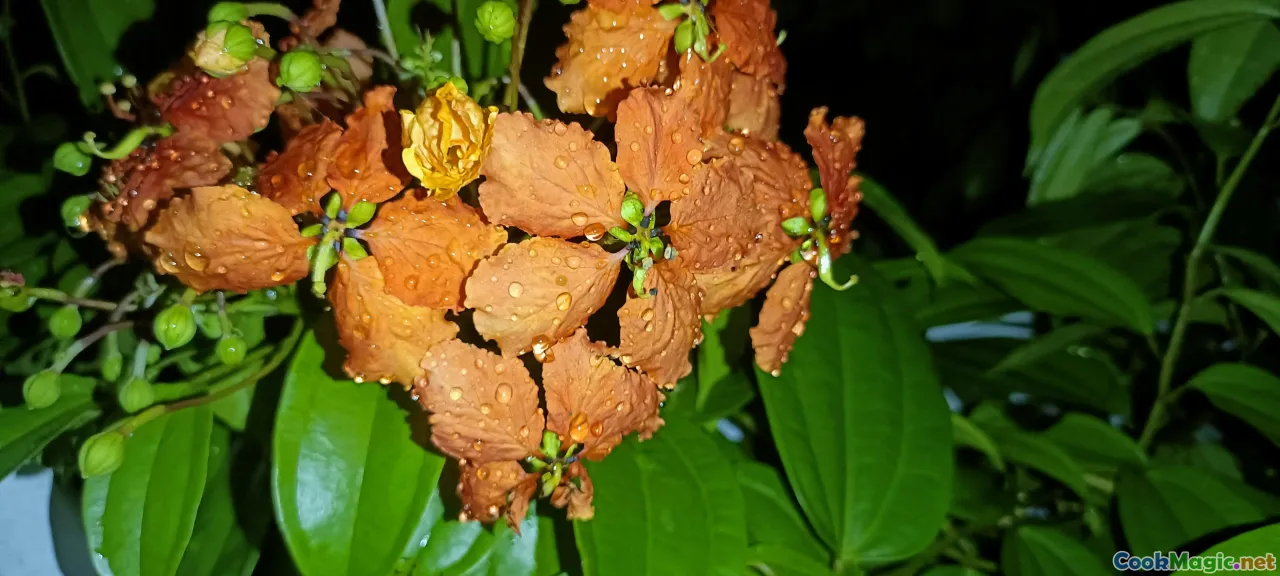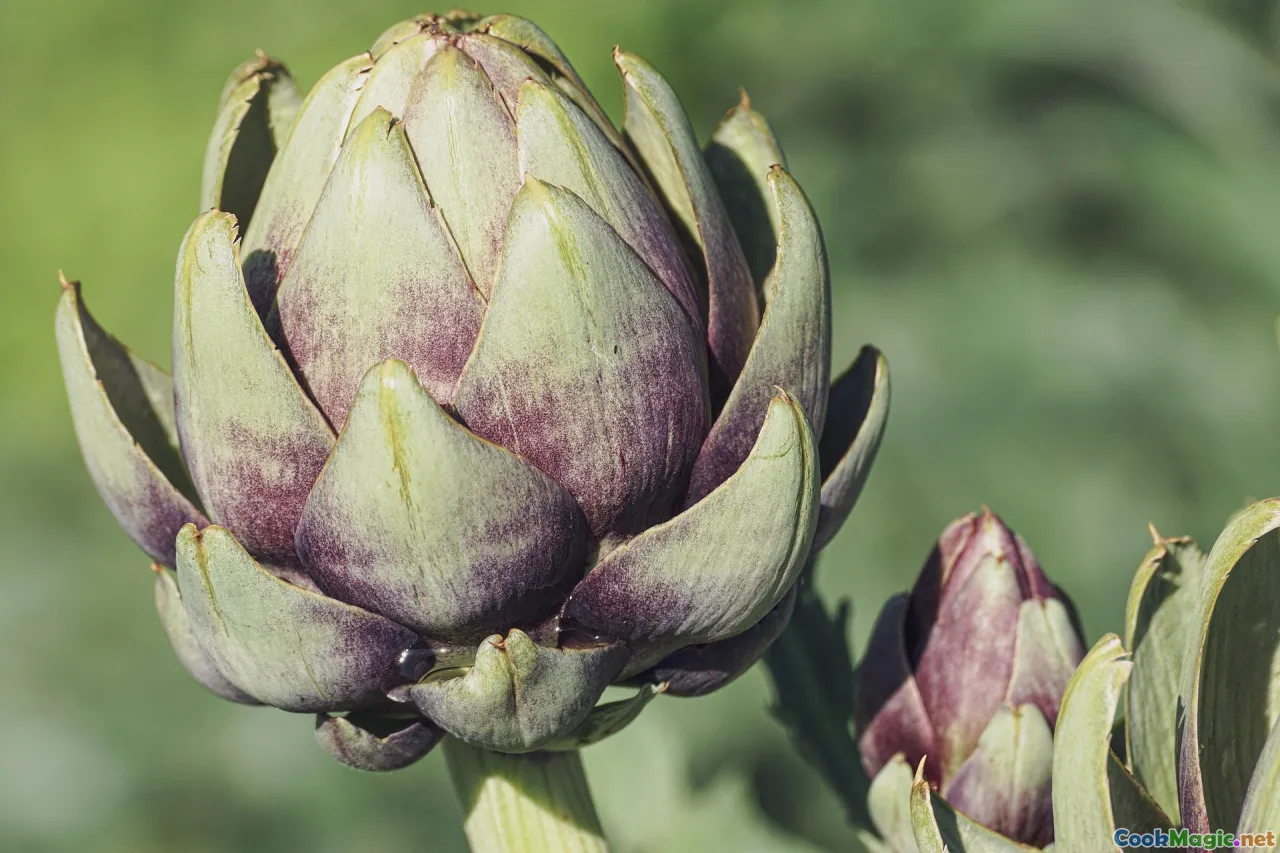
블루 연꽃 병아리콩 플랫브레드: 한입에 담긴 먹기 좋은 우아함
(Blue Lotus Chickpea Flatbreads: Edible Elegance in Every Bite)
(0 리뷰)재료
-
200 grams 병아리콩 가루 (베산)
(Sift before use for best results)
-
200 ml 따뜻한 물
(Add more if your dough is too dry)
-
2 tablespoons 푸른 연꽃 꽃잎 (건조, 식품 등급)
(Substitute with lavender for variation)
-
2 tablespoons 신선한 고수, 다진 것
(Can use parsley as an alternative)
-
1 teaspoon 니겔라 씨앗
(Also known as black cumin)
-
0.5 teaspoon 바다 소금
(맛에 따라)
-
2 tablespoons 올리브 오일 (요리용 추가)
(Use a fruity English variety if available)
-
0.5 teaspoon 베이킹 파우더
(Adds fluffiness to the flatbreads)
-
1 teaspoon 레몬 제스트
(For brightness (optional but recommended))
(Sift before use for best results)
(Add more if your dough is too dry)
(Substitute with lavender for variation)
(Can use parsley as an alternative)
(Also known as black cumin)
(맛에 따라)
(Use a fruity English variety if available)
(Adds fluffiness to the flatbreads)
(For brightness (optional but recommended))
영양 정보
- 인분: 6
- 1인분 크기: 1 flatbread (110g)
- Calories: 187 kcal
- Carbohydrates: 26 g
- Protein: 7 g
- Fat: 6 g
- Fiber: 3.2 g
- Sugar: 2 g
- Sodium: 214 mg
- Cholesterol: 0 mg
- Calcium: 33 mg
- Iron: 1.5 mg
조리법
-
1 - Infuse water with blue lotus:
Heat the water gently, then add blue lotus petals. Let infuse for at least 10 minutes until fragrant and slightly colored. Strain petals and reserve water. Divide petals to add later.
-
2 - Mix Dry Ingredients:
In a large bowl, combine chickpea flour, salt, baking powder, nigella seeds, and lemon zest. Whisk well.
-
3 - Make flatbread dough:
Slowly add infused water (cooled) to the flour mixture, stirring constantly. Add 2 tablespoons olive oil. Knead gently until soft, supple dough forms.
-
4 - Incorporate herbs and blue lotus petals:
Fold in the infused, softened blue lotus petals and fresh coriander gently until evenly distributed.
-
5 - Divide and shape dough:
Divide dough into 6 equal balls. On a lightly floured board, roll each into an 8-inch round (approx. 3-4mm thick).
-
6 - Cook Flatbreads:
Heat a non-stick skillet over medium-high. Add a few drops of oil. Cook each flatbread 2–3 minutes per side, until puffed and golden, adding oil as needed.
-
7 - Serve Warm:
Serve hot off the pan, either as is or brushed with extra olive oil. Garnish with extra blue lotus petals or fresh herbs, if desired.
Heat the water gently, then add blue lotus petals. Let infuse for at least 10 minutes until fragrant and slightly colored. Strain petals and reserve water. Divide petals to add later.
In a large bowl, combine chickpea flour, salt, baking powder, nigella seeds, and lemon zest. Whisk well.
Slowly add infused water (cooled) to the flour mixture, stirring constantly. Add 2 tablespoons olive oil. Knead gently until soft, supple dough forms.
Fold in the infused, softened blue lotus petals and fresh coriander gently until evenly distributed.
Divide dough into 6 equal balls. On a lightly floured board, roll each into an 8-inch round (approx. 3-4mm thick).
Heat a non-stick skillet over medium-high. Add a few drops of oil. Cook each flatbread 2–3 minutes per side, until puffed and golden, adding oil as needed.
Serve hot off the pan, either as is or brushed with extra olive oil. Garnish with extra blue lotus petals or fresh herbs, if desired.
블루 연꽃 병아리콩 플랫브레드: 한입에 담긴 먹기 좋은 우아함 :에 대한 자세한 정보
Blue Lotus Chickpea Flatbreads: An English Wildflower Reimagined
Blue Lotus Chickpea Flatbreads bring the wild beauty of floral meadows straight onto your plate. In this uniquely English-inspired recipe, chickpea flour makes for a naturally gluten-free base, while blue lotus—historically one of the most evocative edible flowers—delivers a haunting aroma and a delicate touch of mystical flavor. Although you wouldn’t typically find blue lotus strewn over classic English breads, the rise in botanical cookery coupled with adventurous palates serves as inspiration for giving humble flatbreads vibrant, new ambitions.
Brief Origins and The Blue Lotus’s Mysterious Allure
Traditionally, flatbreads have appeared among nearly every global cuisine—from India’s chickpea ‘besan ki roti’ to the English “griddle cake.” The clever use of chickpea flour imparts not only a nutty, hearty flavor but is highly nutritious, adding extra plant protein and fiber to the bread.
Enter the blue lotus (Nymphaea caerulea)—often called the Blue Egyptian lotus, but appearing occasionally as a wild and enchanting addition to British gardens. Revered by Egyptians for both culinary and ceremonial uses, its historical winds eventually scattered seeds throughout Europe. While rarely found in modern British cuisine, forward-thinking English chefs have experimented with edible flowers to inject new horizons of floral flavor. Blue lotus’s gently sweet and anise-tinged petals create a floaty aroma that’s part herby, part honeyed. This recipe celebrates such quiet innovation, fusing plant-powered nourishment with the signature calm decadence of an English flower garden.
Nutrition and Serving
Chickpea flour forms the backbone of this flatbread, naturally gluten-free, protein-rich, and full of vitamins. Olive oil and nigella seeds (popular since Tudor times as "English cumin") round out the dough, while fresh coriander, a citrus burst of lemon zest, and sea salt elevate the taste experience. Each flatbread provides a balanced profile, perfect for vegans and vegetarians but flavorful enough to delight any palate. From fiber to plant proteins and bright healthy fats, these flatbreads fit as well into a summer picnic as they do a smart tea spread.
Tips, Serving Suggestions & Substitutions
- If blue lotus petals are unavailable, substitute with lavender or (for a twist) a scattering of edible rose petals.
- Rolling the dough slightly thinner yields crispier crackers; keep it thick for a more pillowy effect.
- Brush hot, golden breads with a brush of oil fused with extra petals for maximum visual and perfumed impact.
- Pair with floral-based honey, cardamom-infused yogurt, a wedge of aged English Cheddar, or tart fruit chutneys.
- Go seasonal by adding a sprinkle of dandelion flowers or fresh arugula over just-cooked breads.
Unique Aspects and Modern Cultural Fit
Using blue lotus in an otherwise understated flatbread is unconventional—pairing culinary heritage with wild botanical experimentation. Historically, the English have leaned into unusual wild foraging finds, but today’s cooks can celebrate sustainable flavors paired with present-day take on locally-inspired, vibrant eating. These flatbreads reflect the movement to use natural, less-refined flours and revived foraged flavors.
At a brunch or dinner, nothing sparks conversation quite like a dish that unravels a story—blue lotus’s history, enchanting color, and faint numbing fragrance are worthy topics in themselves. Sharing these at the table offers not only a taste adventure but also feeds curiosity and connection, just as the wild meadows of England feed the cultural imagination for the curious cook.
Whether served soft and warm with hummus and olives, or cooled with a slathering of nut butter and honey after an afternoon walk, Blue Lotus Chickpea Flatbreads are more than bread—they’re an edible poem that connects English innovation, past and present, with exquisite, modern charm.

























